Programme of Action
“South Africa is a much better place to live in than it was in 1994 and the lives of millions of our people have improved.”
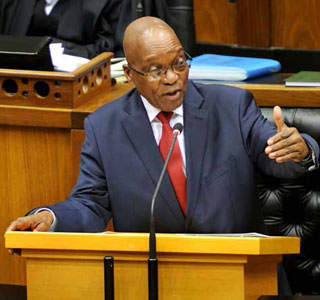 “However, as the National Development Plan and the Presidency’s Twenty Year Review highlight, the triple challenges of poverty, inequality and unemployment continue to affect the lives of many people.
“However, as the National Development Plan and the Presidency’s Twenty Year Review highlight, the triple challenges of poverty, inequality and unemployment continue to affect the lives of many people.
“As we enter the second phase of our transition from apartheid to a national democratic society, we have to embark on radical socioeconomic transformation to push back the triple challenges.
“Change will not come about without some far-reaching interventions,” said President Jacob Zuma in his State of the Nation Address in June.
The recently launched Medium-Term Strategic Framework (MTSF) outlines government's plans for the next five years. Government has set itself targets that it would like to achieve over the next five years based on the commitments made in the election manifesto.
Vuk'uzenzele unpacks government’s Programme of Action based on the MTSF targets over the next five years.
Economic development and employment
Government’s programme of radical economic transformation aims to ensure more rapid, sustainable growth, higher investment, increased employment, reduced inequality and the deracialisation of the economy.
Over the next five years, government’s key targets include:
- An increase in the gross domestic product (GDP) growth rate from 2,5 per cent in 2012 to 5 percent in 2019.
- An increase in the rate of investment to 25 percent of GDP in 2019.
- The share in household income of the poorest 60 per cent of households rising from 5,6 per cent in 2011/12 to 10 per cent in 2019.
- A decrease in the official unemployment rate from 25 per cent in the first quarter of 2013 to 14 per cent in 2020.
Building a better SA
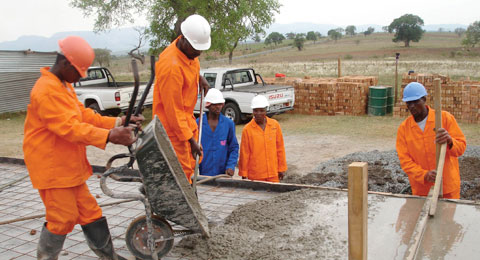 Government will, through the work of the Presidential Infrastructure Coordinating Commission, ensure sufficient energy supply for economic growth and address other infrastructural constraints to growth.
Government will, through the work of the Presidential Infrastructure Coordinating Commission, ensure sufficient energy supply for economic growth and address other infrastructural constraints to growth.
A key priority is to expand electricity supply. Power from the new Medupi coal-fired plant will ease the electricity supply constraint in 2015, and long-term energy security will continue to be a strategic focus.
Government will look at a mix of energy options including coal, nuclear, shale gas, offshore oil and gas and renewables, taking into account environmental, financial, social and other considerations.
The Renewable Energy Independent Power Producers (IPP) programme will continue and the potential for base-load IPP projects will be explored. Expediting the exploration of alternative energy sources in shale and offshore gas will be a priority, both for energy supply and as a potential major source of economic growth.
“Government will continue with various other infrastructure projects that will change the living conditions of our people and boost economic growth,” President Zuma said.
Youth & women employment
- Government will encourage business to target youth and women for employment, and business opportunities, and to use the employment incentive scheme.
- The Youth Employment Accord, which was signed in Soweto, near Johannesburg, on 18 April 2013 by government, organised labour, organised business as well as community and youth formations, offers mass-based, collective and realistic approach to accelerate job creation for young South Africans.
Investing in transport
- Public investments in the transport sector will open up broader growth opportunities, both through improved urban commuter services and a significant expansion in Transnet’s capacity to carry freight by rail.
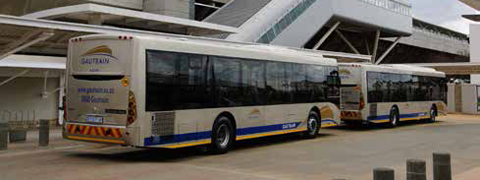
Creating jobs
Government will use the Expanded Public Works Programme (EPWP), in particular the Community Work Programme (CWP), to provide additional employment opportunities, training and work experience, and increase social cohesion.
The EPWP will provide six million work opportunities by 2019 and the CWP will be expanded to have at least one site in every municipality by the end of 2014.
Expanding the information & communications infrastructure
- An additional priority is to expand, modernise and increase the affordability and accessibility of information and communications infrastructure and electronic communication services, including broadband and digital broadcasting. The work of all the state-owned information technology agencies will be aligned towards these objectives.

To ensure an efficient, competitive and responsive economic infrastructure network, government aims to achieve the following over the next five years:
- Increasing the electricity generation reserve margin from 1 per cent currently to 19 per cent in 2019.
- A 5 per cent increase in bulk water resources commissioned in comparison to 2014.
- An increase in broadband penetration from 33,7 per cent in 2013 to 80 per cent in 2019.
- Making sea ports and inland terminals work better from 28 to 35 average crane moves per hour by 2019.
Improving the quality of and expanding access to education & training
 Education plays an important role in equalising individuals’ life chances, promoting economic mobility, advancing economic growth, creating employment, eradicating poverty and reducing inequality.
Education plays an important role in equalising individuals’ life chances, promoting economic mobility, advancing economic growth, creating employment, eradicating poverty and reducing inequality.
Over the next five years, government aims to achieve the following:
- All children between ages 7 and 18 should be in school.
- 65 per cent of learners should be in class groups appropriate to their age.
- 60 per cent of each age cohort should receive either a National Senior Certificate or an alternative vocational or further education and training qualification.
- 75 per cent of learners tested through the Annual National Assessments in Grades 3, 6 and 9 should achieve above 50 per cent in both literacy and numeracy.
- The number of Grade 12 level learners qualifying for university entrance will be increased to 250 000 (172 000 in 2013).
- The number of students enrolled at universities will increase from 950 000 in 2013 to 1,07 million.
- 90 per cent of learners who require workplace-based training and experience to complete their qualification and be placed.
- The number of students enrolled in Technical and Vocational Education and Training (TVET) colleges will increase from 670 455 in 2013 to 1,238 million.
- University enrolment in foundation programmes will increase to 36 000 students from 16 300 in 2013.
- The number of artisans produced every year will increase to 24 000 per year by 2019 (from 18 110 in 2013), to meet the needs of a growing economy.
- To support the knowledge economy, the number of PhD graduates will increase to 3 000 per year by 2019 (from 1 870 per year in 2013).
- The number of graduates in engineering science will increase to 57 000 over the five year period – 9 974 were produced in 2012.
- The number of graduates in human and animal health will increase to 45 000 over the five year period – 8 015 were produced in 2012.
- The number of graduates in natural and physical sciences will increase to 36 000 over the five year period – 6 366 were produced in 2012.
- To support basic education, universities will produce 20 000 teacher graduates per year by 2019, an increase from 13 740 in 2013.
- To support the quality of lecturing, 10 universities will offer TVET lecturing qualifications by 2019.
- 30 per cent of TVET college lecturers should have workplace exposure every year by 2019.
- The Teaching and Research Development Grant will increase from 50 academics in 2012 to 400 academics by 2019.
- To transform the historical and social composition of the academic work force, the number of new black entrants will be increased by at least 100 by 2019 per year.
- The number of postgraduate students awarded bursaries and fellowships by the National Research Fund will increase to 27 411 cumulatively over the five year period for Masters students (3 704 in 2012), and 15 209 cumulatively over the five year period for Doctoral students (2 265 in 2012).
Initiatives to sustain and accelerate improvements in school performance include the following:
- Measures to improve school governance, leadership and accountability, including competency criteria and management support for principals and district officials, to ensure that teachers are on time, teaching and cover the whole curriculum.
- Investment in school buildings and maintenance to address backlogs, replace inappropriate buildings, and meet minimum standards for sanitation and school facilities.
- Support for teacher development and improved training of future teachers, building on the Funza Lushaka bursary scheme.
- Ensuring that every learner has access to the required textbooks in every learning area and grade.
- Strengthening the quality of the current provision of Grade R while ensuring that adequate planning is undertaken to expand provision to pre-Grade R.
- Further expansion of early childhood development (ECD) programmes, driven by the social development sector, contributing to improved school readiness of 5-6 year-olds.
- Implementation of school safety programmes to ensure learner well-being, including zero-tolerance of bullying and abuse of learners.
- Introducing African languages to schools in a phased approach to support social cohesion.
Did you know?
Government’s steps to improve the quality of education include ensuring good discipline and accountability in schools, including that teachers are in class, on time and teaching, and that learners are in class and learning. Principals will be supported to maintain discipline and high standards of conduct.
Ensuring quality healthcare & social security for all citizens
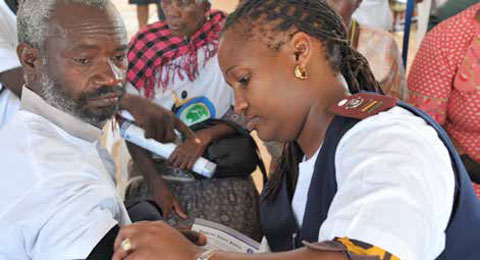 Government’s strategy to achieve better health outcomes include improving the quality and accessibility of health services by phasing in of the National Health Insurance (NHI).
Government’s strategy to achieve better health outcomes include improving the quality and accessibility of health services by phasing in of the National Health Insurance (NHI).
The NHI is a financing system that will make sure that all citizens of South Africa (and legal long-term residents) are provided with essential health care, regardless of their employment status and ability to make a direct monetary contribution to the NHI.
Over the next five years government plans to:
- Improve health care and reduce waiting times in the public sector, supported through the newly established Office of Health Standards Compliance and adherence to a Patients’ Charter.
- Expand and re-engineer primary healthcare, including municipal Ward-based Outreach Teams and school health services.
- Expand district-based piloting of NHI services.
- Promote healthy lifestyles and encourage regular screening for non-communicable diseases.
- Reduce healthcare costs.
- Appoint more staff for health, revitalisation of nursing colleges and expanded professional health training.
- Invest in health management improvements and leadership, including reform of the governance, funding and management of central hospitals as national referral facilities.
- Improve health facility planning and accelerate infrastructure delivery
- Strengthen implementation of HIV and AIDS, and tuberculosis prevention and management programmes.
- Expand access to sexual and reproductive health by improving the availability of diverse contraception methods.
- Reduce unwanted pregnancies with a special focus on teenage pregnancies
- Implement the African Union (AU)- inspired Campaign on Accelerated Reduction of Maternal and Child Mortality in Africa.
To expand health care services over the next five years, government will:
- Build 213 clinics and community health centres and 43 hospitals.
- Refurbish over 870 health facilities in 11 NHI pilot districts.
- Double the annual training of doctors locally and abroad to 2 000 a year.
- Double the number of people on antiretrovirals from the present 2,4 million to a projected 5,1 million.
- Intensify TB screening and treatment programmes for vulnerable groups, including 150 000 inmates of correctional services facilities, 500 000 mineworkers and an estimated 600 000 people living in mining communities.
- Vaccinate all girls in Grade 4 against the human papilloma virus, to significantly reduce their risk of acquiring cervical cancer in future.
Some of the health interventions that government aims to achieve by 2019 include:
- Raising life expectancy at birth to 63 years.
- Decreasing the under-five mortality rate from 41 in 2012 to 23 per 1 000 live births.
- Decreasing the infant mortality rate from 27 in 2012 to 18 per 1000 live births.
- Lowering the maternal mortality rate from 269 to below 100 per 100 000 live births.
Social protection system
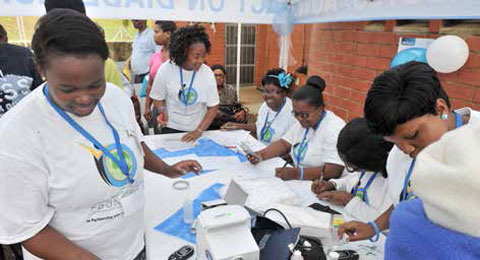 Government aims to achieve the following key targets:
Government aims to achieve the following key targets:
- An essential age- and developmentally stage-appropriate package of quality ECD services is available and accessible to all young children and their caregivers by 2024.
- Universal access (at least 95 per cent of eligible people) to social assistance benefits by 2019, notably the child support grant, disability grant and old age pension.
Special attention will be paid to improving capacity in the areas of forensics, crime investigations, and preventing crimes against women and children.
Government will ensure that repeat offending or re-offending is reduced by increasing and improving rehabilitation programmes for offenders, improving the integration of parolees into communities and ensuring fewer parolee or probationer violations. Coordinated initiatives to make the criminal justice system more efficient and effective will continue to be prioritised.
The South African Police Service’s response to reported crime incidents will be enhanced by improving reaction times, investigations, pre-trial processes and case cycle times.
South Africa’s borders will be more effectively defended, protected, secured and well-managed by, among other things, taking measures to reduce illegal cross-border activities.
Over the next five years, government aims to improve conviction rates for serious corruption cases. Anti-corruption legislation will also be revised to provide for more stringent penalties, to protect whistle-blowers – including those in the private sector – and to strengthen the independence of anti-corruption agencies to protect them from political pressure.
The Special Investigating Unit, the Anti- Corruption Task Team, the Asset Forfeiture Unit and the Hawks will continue to combat corruption in society broadly and in the public sector.
Fighting corrupiton & crime
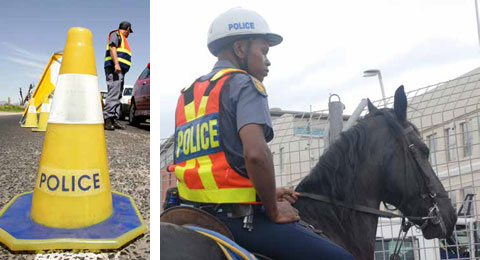 Government will tackle crime by:
Government will tackle crime by:
- Reducing the number of contact crimes.
- Increasing the proportion of citizens who feel safe walking alone, during the day or at night, as measured in official surveys.
- Increasing the proportion of households that are satisfied with police services in their area, and with the way courts deal with the perpetrators of crime.
- Improving citizens’ perceptions of levels of crime.
- Improving South Africa’s ranking on the Transparency International Corruption Perception Index.
To achieve these targets, government will work to reduce levels of contact crime; ensure an efficient and effective criminal justice system, effectively defend and secure South Africa’s borders; tackle cyber-crime; ensure domestic stability and secure the identity of all persons in South Africa.
Rural development & land reform
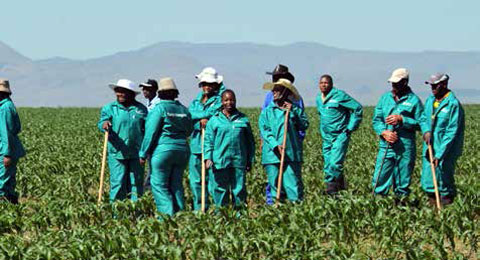 To strengthen food security and agricultural competitiveness, and lift marginalised rural households out of poverty, especially in former homeland areas, government aims to achieve the following over the next five years:
To strengthen food security and agricultural competitiveness, and lift marginalised rural households out of poverty, especially in former homeland areas, government aims to achieve the following over the next five years:
- Increase the percentage of productive land owned by previously disadvantaged individuals from 11,5 per cent in 2013 to 20 per cent.
- Ensure that 7,2 million hectares (ha) of land in total will have been transferred to previously disadvantaged individuals and is being used productively (as compared to four million ha by 2013).
- Reduce the percentage of households who are vulnerable to hunger from 11,4 per cent in 2013 to less than 9,5 per cent.
- Reduce the percentage of the population living below the lower bound poverty line (R443 in 2011 prices) from 32,3 per cent to below 22 per cent.
- Reduce rural unemployment from the current 49 per cent to less than 40 per cent.
Important interventions:
- Citizen participation in local government processes will continue to be promoted.
- Cooperative governance arrangements will be strengthened to better support and empower municipalities.
- A long-term approach will be taken to skills development and capacity building for the local government sector.
- Institutional problems will be addressed to improve the quality of municipal administrative and management practices, including human resources and recruitment practices, supply chain and financial management, and anti-corruption initiatives.
A better Africa & world
- Government aims to increase foreign direct investment into South Africa and increase the country’s exports.
- Government will continue to promote peace and security, strengthen regional integration, significantly increase intra- African trade and champion sustainable development in Africa.
- Government will increase the number of foreign visitor arrivals to more than 15 million annual foreign visitor arrivals by 2017, and increase the contribution of tourism revenue to the economy to more than R125 billion by 2017.
- Government will also advance developmental cooperation and integration to achieve industrial development, as well as infrastructure development and market integration by contributing to the revision of the Southern African Development Community Regional Integrated Strategic Development Plan.
- The Draft Phase 1 Trilateral Free Trade Agreement (FTA) will be successfully concluded to enable greater intra-African trade, industrialisation and infrastructure development. Government will also contribute to the review of the role and functioning of the Southern African Customs Union.
- South Africa will continue supporting and executing decisions of the AU and its structures, including the African Court for Human and People’s Rights. The country will also increase the uptake of South Africa’s quota of posts in the AU Commission and AU structures to 60 per cent.
- Government will continue to contribute to the implementation of New Partnership for Africa’s Development programmes and plans. In addition government will ensure that key South African positions are reflected in the processes leading up to the establishment of the Continental FTA.
- Government will also continue to promote mutually beneficial South-South cooperation by using membership of and engagements with formations and groupings of the South.
- Government will aim to harness the economic strength of countries and groupings of the South by increasing the number of South Africa’s bilateral economic cooperation agreements from 49 to 59. It will also continue to promote mutually beneficial relations with countries of the North.
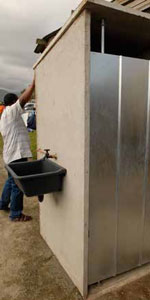 Adequate human settlements & basic services
Adequate human settlements & basic services
To achieve the vision of sustainable human settlements and an improved quality of household life, government’s priorities over the next five years include:
- Adequate housing and improved quality living environments, with approximately 1,4 million more households living in new or improved housing conditions by 2019.
- A functional and equitable residential property market with a target of 110 000 new housing units delivered in the affordable gap market by 2019.
- Enhanced institutional capabilities for effective coordination of spatial investment decisions, with a target of 49 municipalities assigned or accredited with the housing function.
- The title deeds for all 563 000 new subsidy units as well the backlog of 900 000 title deeds in the integrated residential housing programme will be transferred over the next five years.
- Informal settlement upgrading will be expanded to cover 750 000 households, ensuring basic services and infrastructure in some 2 200 informal settlements.
Housing communities
- In mining communities, housing solutions will be sought through partnership between the State, municipalities, employers and financial institutions. Within the public service and in the private sector, improved access to affordable housing could be supported through remuneration allowances or credit enhancement.
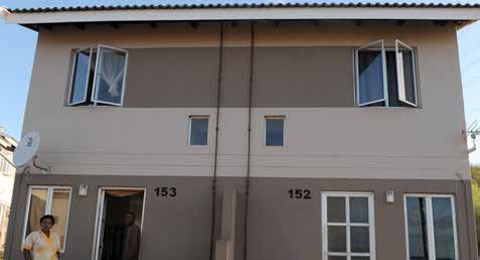
Ensuring affordable housing
- Government will tackle the challenges of the affordable housing market, barriers to more rapid residential construction will be addressed, together with support for broadening access to housing credit, particularly for first-time home-buyers.
Effective local government
To ensure that communities have sustainable and reliable access to basic services, government aims to achieve the following by 2019:
- An increase in the percentage of house households with access to a functional water service from 85 per cent in 2013 to 90 per cent.
- An increase in the percentage of households with access to a functional sanitation service from 84 per cent in 2013 to 90 per cent, including eliminating bucket sanitation in the formal areas.
- 1,4 million additional households will be connected to the grid between 2014 and 2019, and 105 000 additional non-grid connections.
- Provide an income support to the unemployed by expanding the CWP to reach one million participants.
- An increase in the level of public trust and confidence in local government from 51 per cent in 2012 to 65 per cent in 2019, as measured by the IPSOS survey. • An improvement in overall municipal audit outcomes, with at least 75 per cent of municipalities receiving unqualified audits.
Social cohesion & national building
 To promote a socially inclusive society, government will over the next five years ensure that the:
To promote a socially inclusive society, government will over the next five years ensure that the:
- Proportion of people of the opinion that race relations are improving rises to 65 per cent (from 40 per cent in 2011).
- Social cohesion index rises to 90 per cent in 2019 (from 80,4 per cent in 2011).
- Active citizenship index rises to 85 per cent in 2019 (from 79 per cent in 2011).
- Number of people over 18 that belong to a charitable organisation rises to 10 per cent in 2019 (from 5 per cent in 2011).

 Facebook
Facebook Twitter
Twitter WhatsApp
WhatsApp